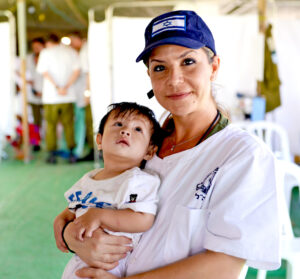
Israel: Humanitarian Aid
BOOKLET SERIES Israel HUMANITARIAN AID Share on facebook Share on twitter Share on linkedin Share on whatsapp Share on email View as PDF Israel: Turning
BOOKLET SERIES
THE JEWISH PEOPLE
Background About The Jewish People
Jews are an ancient people whose identity, language, religion, and culture go back over 3,000 years in the Land of Israel. Though Jews never built a vast empire, they had a deep in uence on the rise of Christianity, Islam, and other pivotal elements of human history. While some always remained in Israel, over the centuries most Jews scattered across the world. As a result, modern Jewish communities today are extremely diverse in ethnicity, culture, skin color, and more. Historically, the glue that connected Jews around the world has been Judaism, the religion of the Jewish people. This included the study of the Torah and following a lunar calendar whose holidays are synchronized with the seasons in the Land of Israel. The common written and spoken language of the Jews is Hebrew, which is indigenous to the Land of Israel. While ancient, it has been revitalized in Israel as a modern language. An Israeli can uently read a Hebrew text written thousands of years ago as well as a contemporary Hebrew essay discussing cutting-edge, high-tech developments. On the eve of World War II (1939), the world’s Jewish population was about 18 million. After the Nazi genocide of an estimated six million Jews (two-thirds of Europe’s Jews or one-third of all Jews at the time), the total number of Jews worldwide was about 12 million. The world Jewish population has not yet recovered its pre-Holocaust numbers. Today there are an estimated 14.7 million Jews globally. Israel’s Jewish population is about 6.7 million or about 45 percent of the world’s total number of Jews. Of the eight million Jews living outside Israel, 5.7 million reside in the United States.
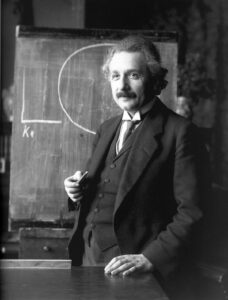
Ashkenaz (אשכנז) is the classical Hebrew word for Germany. Ashkenazi describes Jews from Western and Eastern Europe, including Russia. Though large communities still live across Europe, Ashkenazi Jews were devastated by the Holocaust and antisemitic persecution in Russia. With the fall of the Soviet Union in 1989, about one million Jews left and resettled in Israel. About 80 percent of American Jews and about 45 percent of Israeli Jews are considered Ashkenazi. One of the most unique aspects of Ashkenazi culture is the language Yiddish. Written in Hebrew, it is a fusion of German, Hebrew, Aramaic, and some local dialects. Most Ashkenazi Jews no longer speak Yiddish, but Yiddish words and expressions are still used in many Ashkenazi Jewish homes
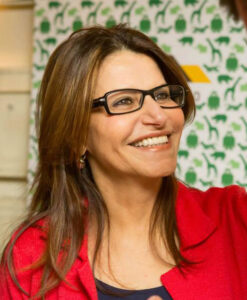
The word mizrah (מזרח) means “east” in Hebrew. Mizrahi describes Jews who lived across the Middle East and North Africa. Though they faced systemic discrimination, Mizrahi Jews built many thriving communities, including some that existed for thousands of years. They also developed unique languages, including Judeo-Arabic, Judeo-Aramaic, and Judeo-Persian—all written in Hebrew. Tragically, due to persecution and expulsion in the 20th century, 99.8 percent of Mizrahi communities across the Middle East and North Africa no longer exist. Between 1948 and 1970, about 850,000 Jews were pushed out of their homes in ten Arab countries. Kurdish Jewish man Judeo-Persian Judeo-Arabic from Algeria Dalya Itzik former Speaker of Knesset, Iraqi descent Avshalom Elitzur Israeli scientist, Iranian descent Brig. Gen. Avigdor Kahalani 1973 war hero, Yemenite descent Israel conducted an emergency airlift (Operation Wings of Eagles) of some 50,000 Yemenite Jews between 1949 and 1950. In 1951 Israel carried out another emergency airlift (Operation Ezra and Nehemiah) that rescued about 130,000 Iraqi Jews and brought them to Israel. Indeed, most Mizrahi Jews resettled in Israel, where, today, they make up about 51 percent of Israel’s Jewish population. The rest live in Europe, North America, and South America.
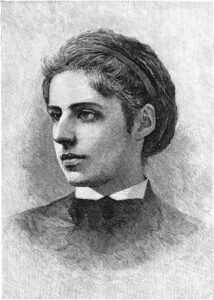
Sepharad (ספרד) is the Hebrew word for Spain. Sephardic is used today to describe Jews whose ancestors lived in Spain. In 1492, during the Spanish Inquisition, Spanish King Ferdinand and Queen Isabella expelled all the Jews from their kingdom, and those who stayed were forcibly converted to Catholicism. Most sought refuge in the Ottoman Empire, while others went elsewhere in Europe. Genetic testing has shown that about 20 percent of Spain’s population is descended from the Jews who were forcibly converted. The first Jews who came to America were Sephardic Jews. After fleeing the Inquisition they found refuge in Amsterdam. They were among the founders of New Amsterdam, which eventually became New York. The language most Sephardic Jews spoke is called Ladino. It is written in Hebrew and is a fusion of Spanish, Hebrew, and Aramaic. Some Sephardic Jews still speak Ladino as their mother tongue.
Indian Jews are made up of ve communities, each with their own distinct history. The oldest Jewish community lived in Cochin. They came to India from the Land of Israel about 2,500 years ago. The Bene Yisrael migrated from the Land of Israel to India approximately 2,100 years ago and live in what is now the state of Maharashtra. Baghdadi Jews emigrated from Iraq and Iran some 250 years ago, settling in Mumbai. The Bene Menasha Jews claim descent from the ancient Israelite tribe of Menashe. Lastly, the Bene Ephraim are from the state of Andhra Pradesh and began observing Judaism in 1981. Although they have never been persecuted in India, today most Indian Jews live in Israel.
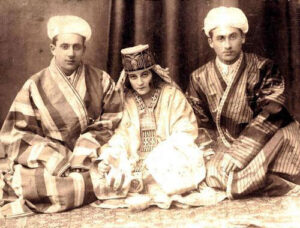
Bukharan Jews are part of Mizrahi Jewry, living in Kyrgyzstan, Tajikistan, and Kazakhstan. Most are in Israel today. Kazakhstani Jews are an ancient community made up of Bukharan and Juhuro Mountain Jews. In addition, the Soviet dictator Stalin forced thousands of Ashkenazi Jews to move there.
The Jews of China are mostly Sephardic but also Ashkenazi, Mizrahi, and local converts. The earliest record of Jews in China goes back to the eighth century CE, when the Kaifeng Jewish community was established. There is no history of antisemitism in China. During World War II, Shanghai was occupied by Imperial Japan and became a refuge city for Jews fleeing the Holocaust. Nonetheless, under pressure from their Nazi German
allies, the Japanese forced the Jews to live in an overcrowded ghetto.
Ethiopian Jews, also known as Beta Yisrael (House of Israel), are believed to be descended from the Israelite tribe of Dan. They lived in northern and northwestern Ethiopia, in more than 500 small villages spread over a wide territory. They were cut off from mainstream Judaism until the 19th century, when their existence began to be known among the Jews of the Middle East, North Africa, and Europe. Today, most Ethiopian Jews live in Israel. Thousands were airlifted by the Israeli government in Operation Moses (1984–85) and Operation Solomon (1991). Since the 1980s, over 80,000 Ethiopian Jews immigrated to Israel, many of them escaping war and persecution. Over 135,000 live there today. While they face challenges with discrimination and integration into Israeli society as newer immigrants, Ethiopian Jews are advancing rapidly in education, employment, and other areas of Israeli life.
The Abuyadaya (People of Judah) are descendants of 20th-century converts to Judaism. Today they number just over 1,000 and live in nine villages in the Pallisa District of Uganda. They have established contact with Jewish communities, particularly in the U.S. and Israel, and received support for the building of hospitals, synagogues, and schools. Members of their community study in Israeli religious seminaries and are recognized by Conservative and Reform Judaism.
Madagascar: A small number of people began practicing Judaism in 2010. Today they form three communities. Côte d’Ivoire: A Jewish community began to form in 2000, practicing Orthodox Judaism. Another group called Danites claims descent from the Tribe of Dan. Most are Christians and Muslims, but a small number are considering formal conversion to Judaism. Cameroon: An estimated 167,000 members of the Ba-Saa tribe identify as Jews. American actor Yaphet Kotto’s father (Avraham Kotto) is from Cameroon and is Jewish. Zimbabwe: Members of the Lemba tribe claim Jewish heritage. Many traditional Lemba beliefs and practices follow Jewish and Muslim traditions. Lemba tradition tells of its male ancestors leaving Judea about 2,500 years ago and settling in Yemen. Eventually they migrated to Africa.

While most American Jews are of Ashkenazi descent, the American Jewish community is very diverse. This includes Jews of color: African Americans, Latinos, and Asian Americans who belong to every stream of Judaism, including Orthodox, Conservative, Reform, and Reconstructionist. Because of this diversity, critical discussions about race in America at large are mirrored among Jews. Jews of color are raising awareness of their role and presence in American Jewish communities, many of which are striving to become more inclusive.
The first black rabbi in the United States was Rabbi Arnold Josiah Ford, a civil rights activist in the early 20th century. Prominent African American Jews include academic and civil rights activist Julius Lester, Rabbi Georgette Kennebrae, and musician Lenny Kravitz
Latino Jews live across the U.S. and South America. Additionally, many non-Jewish Latinos are descended from Jews who were forced to convert to Catholicism during the Spanish Inquisition.
Asian American Jews are a growing portion of the rich Jewish American tapestry.

The beautiful Jewish tapestry is thriving in Israel. Just under half of Israel’s Jewish citizens are Ashkenazi Jews. Most Israeli Jews are people of color. Their immediate ancestors came to Israel from North Africa, the Middle East, Central Asia, and Africa, often escaping persecution. Israel is a mosaic of Jewish and non-Jewish cultures, with Jews from over 70 countries living alongside non-Jewish minorities (Arab Muslims, Christians, Druze, Bedouins, and others) who make up about 20 percent of the population. Despite disagreements and historic tensions between many of these communities, together they have built one of the most diverse and vibrant nations in the world.
YOU MAY ALSO ENJOY

BOOKLET SERIES Israel HUMANITARIAN AID Share on facebook Share on twitter Share on linkedin Share on whatsapp Share on email View as PDF Israel: Turning
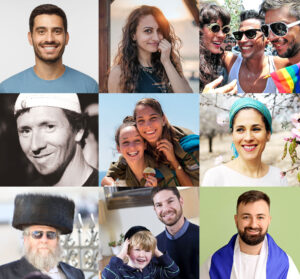
BOOKLET SERIES THE JEWISH PEOPLE A Beautiful Tapestry Share on facebook Share on twitter Share on linkedin Share on whatsapp Share on email View as
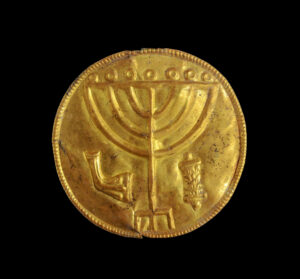
Booklet Series JEWS ARE INDIGENOUS TO ISRAEL The Jewish People’s Connection To Their Ancestral Homeland Share on facebook Share on twitter Share on linkedin Share